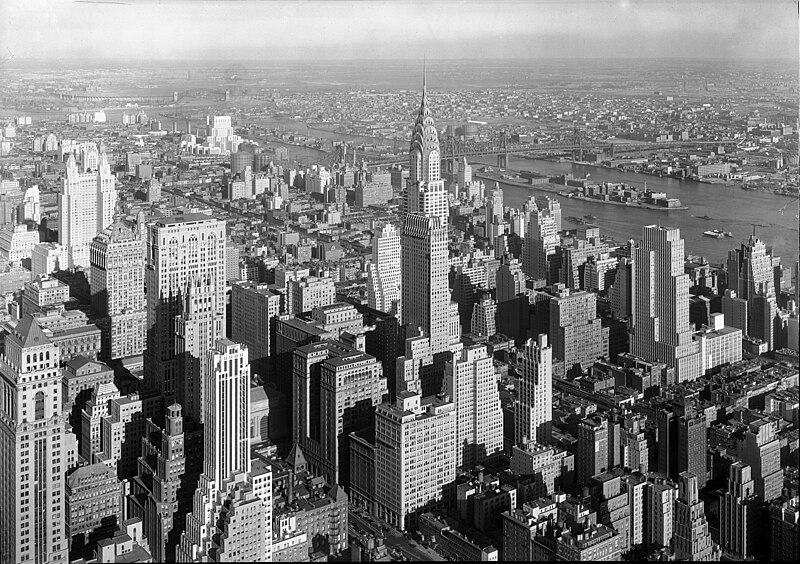Hello ladies and gents this is the Viking telling you that today we are talking about
THE CHRYSLER BUILDING
The Chrysler Building is an Art Deco–style skyscraper located in the Turtle Bay neighbourhood on the East Side of Manhattan, New York City, at the intersection of 42nd Street and Lexington Avenue near Midtown Manhattan. At 1,046 feet (318.9 m), the structure was the world's tallest building for 11 months before it was surpassed by the Empire State Building in 1931. It is the tallest brick building in the world with a steel framework. As of 2019, the Chrysler is the 11th-tallest building in the city, tied with The New York Times Building.
The Chrysler Building is considered a leading example of Art Deco architecture. It is constructed of a steel frame in-filled with masonry, with areas of decorative metal cladding. The structure contains 3,862 exterior windows. Approximately fifty metal ornaments protrude at the building's corners on five floors reminiscent of gargoyles on Gothic cathedrals. The 31st-floor contains gargoyle and replicas of the 1929 Chrysler radiator caps, the 61st-floor eagles, a nod to America's national bird.
The Chrysler Building uses bright "Nirosta" stainless steel extensively in its design, an austenitic alloy developed in Germany by Krupp (a German acronym for nichtrostender Stahl, meaning "non-rusting steel"). It was the first use of this "18-8 stainless steel" in an American project, composed of 18% chromium and 8% nickel.
Nirosta was used in the exterior ornaments, the window frames, the crown, and the needle. The steel was an integral part of Van Alen's design, as E.E. Thum explains: "The use of permanently bright metal was of greatest aid in the carrying of rising lines and the diminishing circular forms in the roof treatment, so as to accentuate the gradual upward swing until it literally dissolves into the sky...."
Stainless steel producers used the Chrysler Building to evaluate the durability of the product in architecture. In 1929, the American Society for Testing Materials created an inspection committee to study its performance, which regarded the Chrysler Building as the best location to do so; a subcommittee examined the building's panels every five years until 1960, when the inspections were canceled because the panels had shown minimal deterioration.
And as always have a chilled day from the Viking.

Comments
Post a Comment